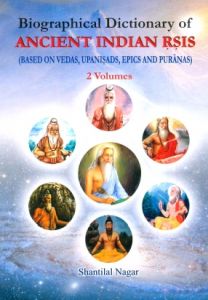
The Vedic evidence points to strong priestly institutions, who could compose verses, not only for the daily worship of the people but also for the performing of homas or yajnas, beside other religious rites relating to the birth, marriage and death of the people in the contemporary society, some of which have come down to the present times.
The Rsis, though were mostly the Brahmanas, but it was not exclusively so. The supreme knowledge was not confined to a particular caste and did not go by birth, but by inner worth achieved by a person with the performing of tapas. For instance, Ambarisa, Trasadasyu, Tryaruna Asvamedha, Purumilha and Ajamila were the royal Rsis. The women also had full religious rights and were known as Rsikas or Brahmavadins. Of these Rosmasa, Lopamudra, Apala, Kadru, Visvavara and several others are quite well known. The Brahmavadins were the products of educational discipline of brahmacarya, for which women were also eligible.
Interestingly, the study reveals that with the passage of time, the Rsis or Acaryas of the earlier times faded into oblivion and their places were taken sons or disciples, as would be evident from the fact that most of the Vedic Rsis are no more to be seen in the post Vedic period and those of that period are hardly found in the Upanisads, the Ramayana, the Mahabharata or the Puranas.
The accounts of the Rsis and the Rsikas in this work provided a graphic picture of their performance from the Vedic to the Puranic period, which has not been brought out so far and it would, surely, interest the readers as well as the research scholars to a considerable extent. The study also covers Yogacaryas, Sangitacaryas, Ayurvedacaryas and Dhanuvedacarayas and their performance during this period.
